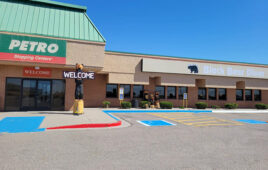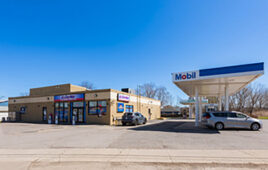 New energy product launches are helping energy drinks and shots gain some of their lost momentum.
New energy product launches are helping energy drinks and shots gain some of their lost momentum.
By Howard Riell, Associate Editor
Fueled by flavor extensions, cross-bundling, limited-time offers and Americans’ nonstop lifestyle, energy drinks are finding new consumers who are reviving lagging sales.
At the same time, energy shots continue to provide a convenient alternative.
For the 52-week period ending May 14, 2017, energy drinks sales in the convenience store channel rose 1.83% to $9.05 billion, according to data from Chicago research firm Information Resources Inc. (IRI). For the same period, sales of energy shots were $731.1 million, down 7.57% from a year ago.
“Energy drinks continue to grow, but somewhat more modestly,” said Gary Hemphill, managing director of research for Beverage Marketing Corp. (BMC). “The last half of 2016 experienced a slowdown. The need state of energy is a large one, so we believe the category is likely to maintain solid growth in the years ahead.”
NATURAL PROGRESSION
Monster, Red Bull and Rockstar remain the leading brands.
New-product activity in the category has been strong, as marketers attempt to draw in new consumers, but also increase consumption among loyal consumers. Studies show while the demographics of customers have broadened in the last couple of years, the core consumer of energy products continues to be younger males.
“There is a broad set of leading, established energy drink brands like Monster and Red Bull,” said Chris Randall, managing director in global consulting firm L.E.K. Consulting’s Consumer Products division. “However, the functional beverage category is evolving, and other drinks like Kombucha are slowly becoming more mainstream. Many of the new, hot introductions focus on ‘natural’ in both drinks and shots, plus the combination of protein and energy.”
Some c-stores that have experienced lagging beverage sales are seeing a rebound this year.
“Energy drinks are actually making a comeback,” said Patsy Varpula, packaged beverage category manager for Fabulous Freddy’s Car Wash in Las Vegas. “I know that CSDs (carbonated soft drinks) are dying, but the category of packaged beverage isn’t completely down because energy drinks, as well as water, are salvaging it.”
Fabulous Freddy’s operates eight locations in Las Vegas, and St. George and Sandy, Utah. The stores feature full-service car washes with detail shops, express lube services, 24-hour convenience store and gasoline.
Red Bull’s steady stream of limited-edition summer flavors over the last few years has helped push sales higher, Varpula noted. “Its Kiwi-Apple was a summer addition, and became a permanent addition. Now Grapefruit is looking at becoming another permanent fixture in its product line. Its diversifying is helping to reintroduce people back into that category who are sick of seeing the same thing.”
MIXING IT UP
Retailers are employing their own strategies to wring the most out of energy sales.
“Last year, the energy category started to flatten out,” said Bailey Lyden, vice president of retail for Brecksville, Ohio-based Truenorth Energy LLC, which operates the 110-store chain truenorth. “They’d had double-digit increases for almost a half-decade.”
The category, however, still remains strong. The c-store’s strategy has been to front-line all of its energy drinks.
“Everything that is 16-ounces, outside of Red Bull, we price the same at $2.69, whether it be Amp, Rock Star, Monster or Xyience,” said Lyden. “We make a tremendous amount of profit on Amp and Rock Star just because the cost is lower. We’ve found the customer doesn’t really identify that much, and is not too discouraged, with that price point. So, we make a tremendous amount of gross profit by front-lining all 16-ounce drinks with Monster. It’s been extremely effective for us.”
Company sales of energy drinks thus far in 2017 are up around 10%, he added.
The truenorth chain, which operates in Ohio and Illinois, has found some success by cross-promoting its energy drinks with foodservice. “We’re using, ‘buy sandwiches, get discounts on energy drinks,’” said Lyden. “Breakfast sandwiches are a great bundling opportunity with energy drinks.”
The proliferation of flavors among major brands is adding appeal for female consumers, Lyden suggested. So have the low-carb ‘diet’ line extensions. Limited-time offers like those from Red Bull have likewise proven popular.
“Anything we come out with always has good trial,” said Lyden. “Whether it stays is another thing, but anytime there is a new energy flavor, it does fairly well.”
To take advantage of the natural draw of energy drinks, Lyden advises retail colleagues to look at cross-bundling opportunities. “Utilize other high-volume areas, such as foodservice. Promote in and around there, and then vice versa; promote your foodservice bundling opportunities on your cooler door.”
SHOTS AND MORE SHOTS
Energy shots, BMC’s Hemphill said, have flattened in their performance during recent years.
“They are positioned differently than the drinks, which are more viewed as lifestyle beverages,” said Hemphill.
L.E.K. has noticed an emergence of multifunction energy shots that include both caffeine and protein, capitalizing on the growing demand for more protein in U.S. diets. “5-hour remains the clear market leader in energy shots with strong established distribution,” said Randall. “However, we have seen some emergence from natural brands like Yerba Mate and private-label products.”
Though 5-hour Energy continues to lead the way, new players are finding their way into the energy shot market. For example, truenorth offers just 5-hour Energy, but according to Lyden that may change soon. “I’ve been seeing more of my competitors switch to different brands.”
Having more than one energy shot offering is better, Lyden explained. “Living Essentials, with that 5-hour Energy brand, is pretty price proud; they are expensive, if you will. I think we might have an opportunity to reach more of our customers with a value-added proposition in that shots category.”
Shots do well, Lyden noted, with consumers unwilling to drink 16-ounces of fluid. “They still want the pick-me-up. I’m a 5-hour guy myself,” he said.
VITALITY DRIVERS
Energy shots are not traditionally a heavily promoted category, said Randall. Historically, the key for driving excitement in the category has typically been new flavor introductions.
“Two key trends are likely to persist,” said Randall. “The emergence of more organic, ‘clean label’ energy shot brands and products, following broader trends in supplements and food and beverage. And an ongoing diversification of flavor profiles, as has also been seen in other food and beverage categories.”
For retailers hoping to grow energy sales, L.E.K. sees a clear opportunity to drive additional sales with better marketing that is focused beyond the young male consumer to appeal to a fuller set of consumers. “Flavor development continues to be a potential opportunity for additional sales in the shots and energy drinks categories.”
The consulting firm also suggested that retailers consider more in-store sampling and demonstration events.




